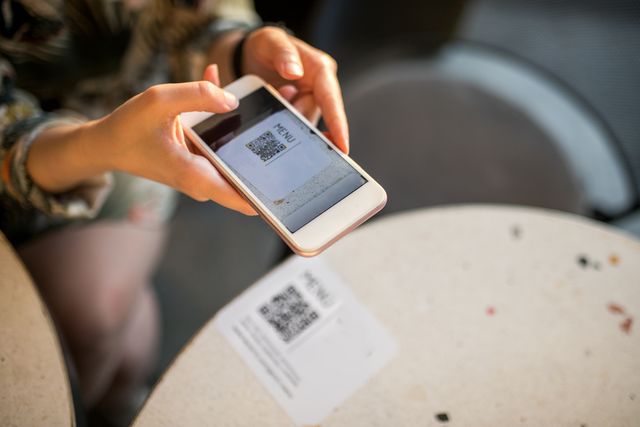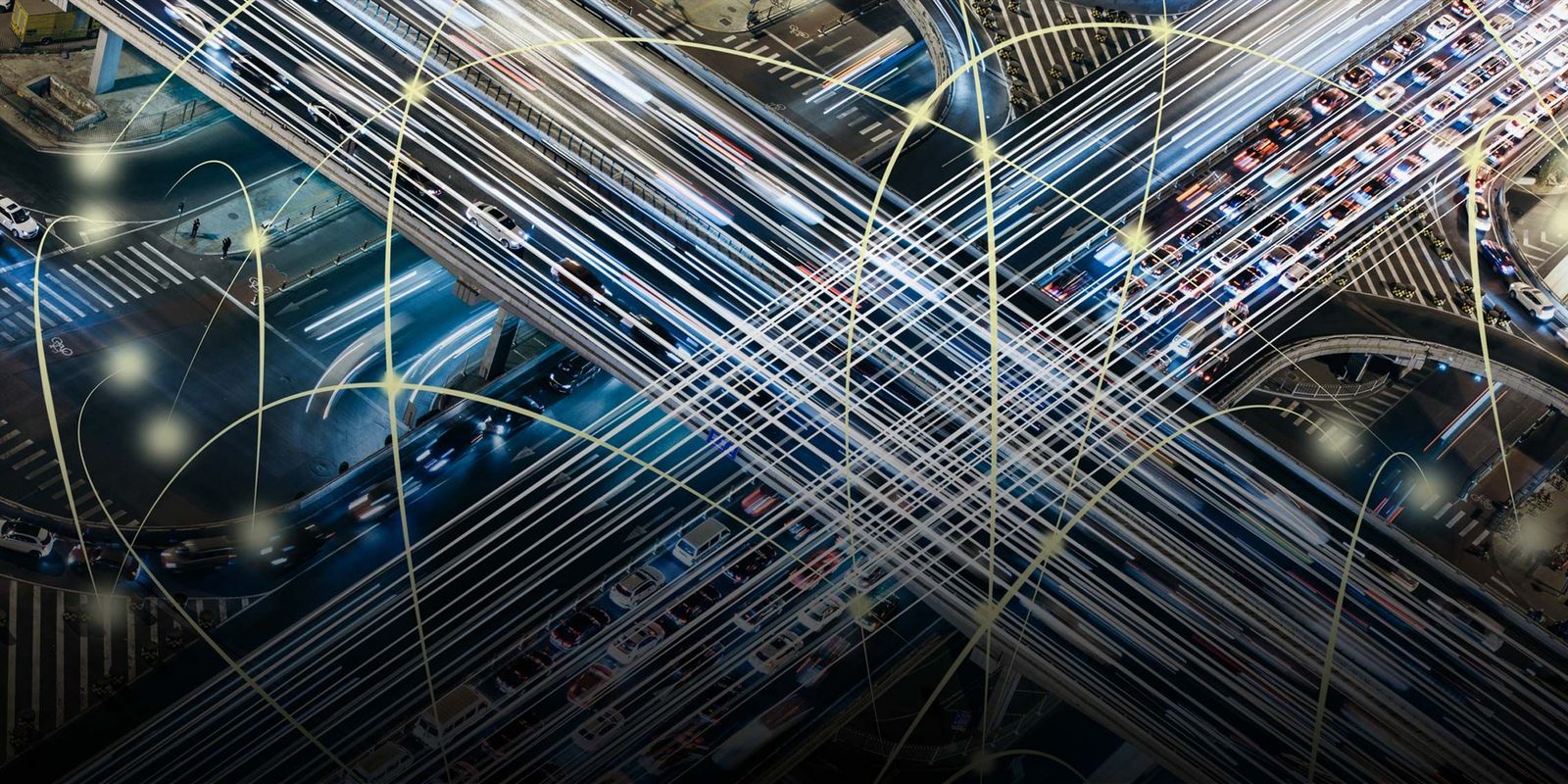26. November 2020
In Asia, QR codes have long been part of everyday life; in this country, by way of contrast, the black-and-white pixelated graphics are very far from making it out of their special niche. With the coronavirus crisis, the popularity of the QR code has now received a significant boost on a global scale.
Masahiro Hara and his team had good reason to celebrate this October: the developers from the Japanese company Denso Wave were awarded the IEEE Milestone Award – for the global influence of the QR code they invented in 1994. At the time, the idea was to help identify components more quickly in Toyota's automotive production.
The beauty of these two-dimensional, machine-readable labels is that their pixel squares can store about 200 times more information than a classic bar code. The decoding works from many angles and is also mostly reliable even when the QR code is framed by words or images. The data can still be read even if almost a third of the code area is dirty or corrupted. QR stands for “quick response”. Ironically, however, it could take much longer for the technology to go truly global.
To code or not to code?
With the advent of the smartphone, the QR code has been emerging from the industrial production halls and warehouses for which it was created and finding its way by increments into the everyday life of end users. As the most direct means of connecting the analogue world with information and offers on the Internet, the QR code is fast becoming a global fad. As webcams sprouted on houses and trees worldwide in the early days of the Internet, it may soon feel as if QR codes are everywhere, on every last surface and product. But excitedly scanning the code all too often takes you to an address which offers little other than disappointment. Many websites are not yet optimised for smartphone displays, which means that the user has to go through the complicated procedure of enlarging them, reaping only modest added value in the process. In the worst case, users may find themselves hijacked by sites prepared for the purpose by cyber criminals: In 2013, the Federal Office for Information Security (BSI) warned against clicking on QR codes slapped onto billboards which might lead users to rogue websites. What was the latest thing is now becoming old hat, at least in Germany, and will soon fail to excite anyone who doesn’t work in a marketing department. For most users, the pixel squares on advertising posters, streetlights and advertisements are a kind of op art in public space: patterns with no value, which are largely ignored
Asia goes code-crazy
Things are different in Asia, where the QR code is increasingly becoming a fixture of everyday life. If you walk through a cemetery in Japan or China, you will find gravestones with QR codes on them. When you hover your smartphone over the code, a website will open from which you can learn more about the life of the deceased. These pixel squares can be found on almost every advertising poster in Japan. And the Japanese authorities have also turned to them with enthusiasm: In the city of Iruma, elderly people have mini-stickers with QR codes with an individual identity number glued onto their fingernails or toe nails. This makes it easier for the police to identify people who have become lost. The immigration authority uses a QR code with encrypted data in the visa which is glued into your passport upon entry. In neighbouring China, the QR code has revolutionised payment. According to a study by the analytics firm eMarketer, more than 80 percent of all Chinese smartphone users use their mobile phones to pay at shop checkouts. Alipay and WeChat Pay, the two largest providers of mobile payments, rely on QR code technology.
The growing popularity of QR codes is primarily accounted for by the fact that they have become easier to use. For a long time, you needed a special app to decode them. Now it’s enough simply to hover your smartphone camera over the square. And thanks to faster and more stable mobile internet, the glacial pace of loading websites no longer tries your patience to the limit.
Just scan, don’t touch
The crisis around Covid-19 has also accelerated the global spread of CR codes. Since the outbreak of the pandemic, their use worldwide has increased by 600 percent, the marketing magazine Invidis says. One thing is clear: apart from video telephony, no other technology has undergone such explosive growth as the QR code. And this isn’t just a matter of chance: In a time where physical contact is banned and social distancing has become the norm, the QR code has presented itself as the ideal non-contact medium. The code squares allow people to interact with the world around them by simply tapping on their smartphones. Instead of reaching for a physical menu in a restaurant, you can simply call it up using a QR code. Using applications such as ToastTab, diners can also place their order, pay and tip the waiters with minimum fuss.
PayPal has exploited the coronavirus crisis to push cashless payments via QR code worldwide. In the US, consumers have been able to use the contactless pay option at more than 8,000 stores of the CVS drugstore chain since mid-November. In addition to the large chains, PayPal is also seeking to persuade small and micro-companies of the benefits of contactless payment. Since May, traders and restaurateurs in Germany have been able to display a QR code as a way of taking payment. PayPal is convinced that many traders, especially bakers, flower shops, kiosks and market stall owners, could benefit greatly from QR code technology. For these small businesses, it is often too expensive to purchase an NFC device that allows customers to pay contactlessly.
© picture alliance
Password: QR code
QR-codes are also being used more and more frequently for contact tracing. In Taiwan, you register for everything from entering your office to dropping at the local bar using a QR code. If you want to go to a club, bar or restaurant in Moscow after midnight, you have to scan a code at the door which then redirects you either to a state app or to a site that asks you to enter your phone number. In this way, the authorities in the Russian capital know who has visited which club and when. The codes are mandatory between midnight and six o’clock in the morning. McDonald's recently announced that it would be introducing the system on a voluntary basis in all Moscow stores during the day. Other fast-food chains such as Teremok and Chaihona also want to adopt this anti-coronavirus measure, in the hope that they will be able prevent the impending closure of their branches.
Before the “Lockdown light” came into force, customers were able to leave their contact details via their smartphones in more and more restaurants in German cities. In Wesel on the Lower Rhine, a number of restaurants are offering the QR code as an alternative to the customary paper trail. Unlike in Russia, however, the data are not sent directly to the authorities. According to the developer company from Wesel, they are stored securely on a server in Germany in accordance with the General Data Protection Regulation and only transmitted to the health department if absolutely necessary. Students at Merseburg Universit of Applied Sciences can also register with a QR code when attending lectures.
More and more government agencies are integrating the square fields into their coronavirus measures. In Germany, Covid-19 sufferers can enter their positive test result into the coronavirus warning app to alert people with whom they have come into contact. Anyone looking to travel to Greece or Spain must register in advance online and provide detailed information on the expected duration of their stay, the departure airport and place of residence. They then receive a QR code which must be presented upon entry. If you can’t show your code in Greece, you run the risk of a considerable fine. When you enter Spain, your temperature will be taken, and the information stored in the QR code will be used to determine whether a precautionary coronavirus test is needed.
The pandemic as the mother of invention
In Germany, of course, the contact restrictions are not only creating problems for the hospitality sector, gyms and cultural sites. Because of coronavirus, for example, the charity Caritas Paderborn is also going digital for this year's fundraising appeal. Instead of knocking on doors as usual in the run-up to Christmas, volunteers in 53 municipalities will be handing out postcards with printed QR codes. If you scan the code with your smartphone, you will be taken to a donation page. According to the Catholic charity, the aim is to make it as easy as possible for donors to support charitable projects on the ground.
Since the pandemic had forced them to cancel this November’s traditional parade in honour of St. Martin, the Protestant parish of the Rhineland-Palatinate village of Nieder-Wiesen had to come up with an alternative: around St. Martin's Day, would-be participants in the parade could simply reach for their smartphone and scan a QR code at four stations along the original route. They were then able to listen to stories and songs about the helpful saint, sung by the children from a local kindergarten.


